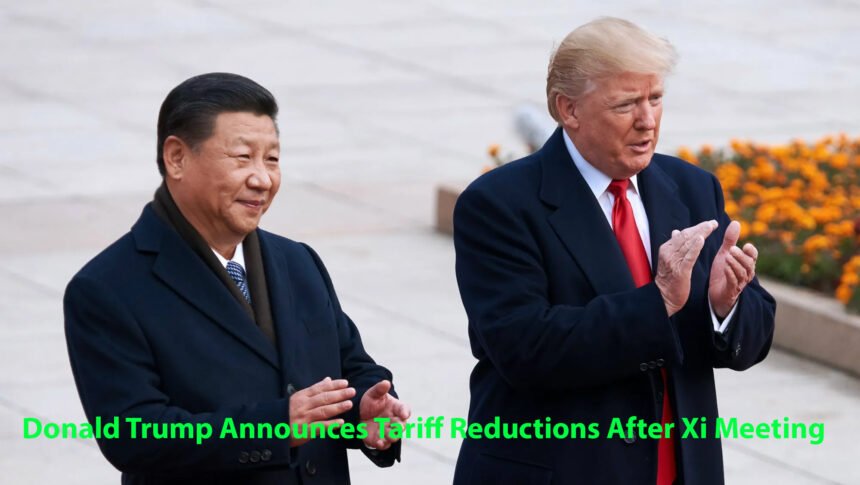Donald Trump declared that tariffs on Chinese goods would be lowered to 47% from 57%, following his summit with Xi Jinping in Busan, South Korea. The meeting marked the first face-to-face encounter between the two leaders since 2019 and was billed as a breakthrough in the escalating U.S.–China trade tensions.
Trump emphasized that the tariff reset applied especially to Chinese chemicals tied to fentanyl production, which he said would drop from 20% to 10%. In exchange, China committed to resuming U.S. soybean purchases and relaxing export restrictions on rare earth materials.
Rare Earth Export Controls Removed — “Roadblock” Ended
A major point of contention had been China’s tightening of export controls on rare earths, critical minerals used in everything from smartphones to fighter jets. Donald Trump labeled those controls a “roadblock” to global supply chains, and following the meeting, he declared: “There is no roadblock at all on rare earth.”
China agreed to pause export curbs on rare earths for one year, signalling a temporary easing of supply chain pressure. Analysts caution that this pause may represent a ceasefire rather than a full resolution, as deeper technological and security conflicts remain unaddressed.
What Led to the Deal
Tensions had intensified over recent months: the U.S. had threatened tariffs of up to 100% on Chinese imports in November in response to China’s export restrictions, and China had responded with its own technology and material controls. With global markets jittery and supply chains at risk, both sides saw an incentive to step back from the brink.
Trump portrayed the Busan meeting as an “amazing” success, saying decisions were “12 out of 10” on his personal scale for diplomacy. One concrete outcome: China agreed to restart large-scale soybean purchases from U.S. farmers, an important win for the agricultural sector.
Implications for Trade, Tech, and Geopolitics
The tariff reduction signals a shift from aggressive escalation toward managed de-escalation. The U.S. will benefit from lower costs for Chinese-made goods, while the resumption of rare earth flows eases pressure on industries reliant on those materials. However, the deal does not address major unresolved issues: Taiwan, advanced chip exports, and the structural nature of U.S.–China competition remain off the table. Some observers warn that the respite may prove short-lived unless deeper frameworks are established.
For China, the willingness to pause export curbs suggests a strategic pivot toward stabilising global markets and managing its own supply chain dependencies. Yet officials emphasised that the agreement is a basic consensus, and follow-up work must still be “refined and finalised”.
What Happens Next?
Trump announced that he plans to visit China in April, with Xi expected to visit the U.S. later. These reciprocal moves suggest the deal is a first stage rather than a final settlement. Markets responded with caution: while the headline news of deal-making was welcomed, investors remain wary because underlying strategic friction remains unresolved.
If either side fails to follow through, trust could erode quickly, resetting escalation risks. From a broader perspective, global supply chains, especially in tech and defence, may now enjoy calmer waters for at least a year as rare earth bottlenecks are temporarily alleviated.
Conclusion
The summit between Donald Trump and Xi produced tangible outcomes: tariff reductions and the lifting of a rare earth “roadblock” were central achievements. However, this marks a pause rather than a full ceasefire in the trade war. The structural competition between the U.S. and China remains deep and multifaceted.
What happens in the next months, how each side implements its commitments, and whether trust is rebuilt, will determine whether this moment offers long term stability or simply a fleeting respite in one of the world’s most consequential bilateral relationships.












